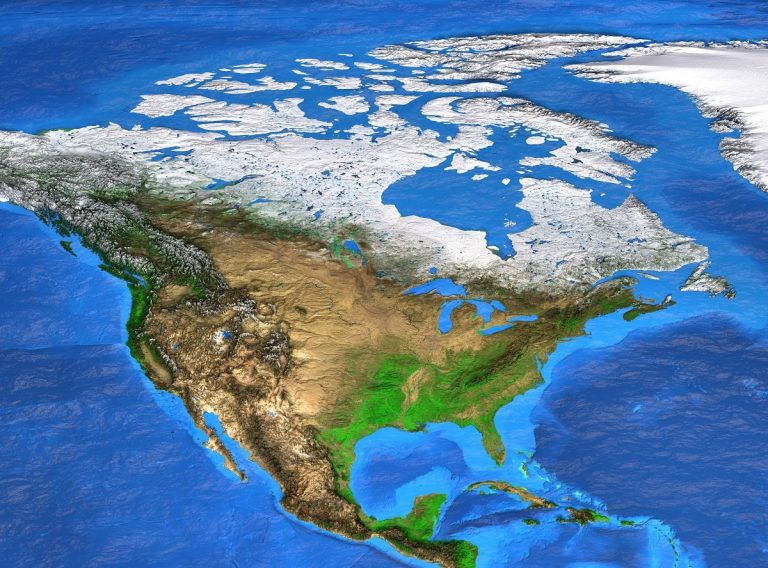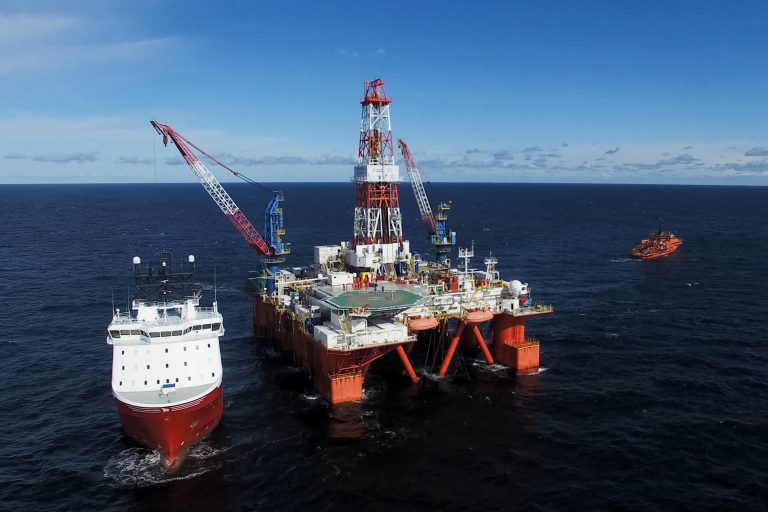The OCSLA (Outer Continental Shelf Lands Act) was created in 1953 by the United States Congress as a secondary measure after passing the SLA (Submerged Lands Act). The SLA gave power to the states for control over natural resources for up to three miles off the coastline and up to nine miles in Texas and Florida.
The SLA was passed due to the increased interest in exploring the sea beds off the U.S. coasts for natural resources including oil and gas. Beyond the 3-mile or 9-mile state cut-off, the U.S. Congress wanted to ensure federal protections extended to the Outer Continental Shelf.
The OCSLA essentially extends federal laws to this area of U.S.-controlled waters and sea beds. The laws apply to all permanent and man-made islands, installations, and other such devices whether they are temporarily or permanently secured to the sea bed.
In addition, the purpose of these structures should be for the exploration, production, or development of natural resources. The OCSLA also applies to any such device or installation used for the transportation of natural resources, aside from a ship or vessel.
Federal laws control how the Outer Continental Shelf is governed within the context of the OCSLA. There is also Section 1333(b) which discusses benefits maritime workers are entitled to should they be injured while performing their assigned job duties offshore in the area that makes up the Outer Continental Shelf.
Specifically, maritime workers are covered under the Longshore and Harbor Workers’ Compensation Act (LHWCA). The LHWCA provides compensation benefits for maritime workers who are not protected under the Jones Act or state worker compensation programs.
Essentially, the LHWCA bridges the gap between these two workers’ compensation benefit programs to ensure maritime workers performing duties in the Outer Continental Shelf region are protected. It covers injuries that occur on U.S. navigable waters while performing specific job duties, such as:
- Loading/Unloading Ships and Vessels
- Repairing Devices, Structures, Installations, etc.
- Building a Man-Made Structure, Device, Installation, etc.
- Exploration, Production, or Development of Natural Resources
A maritime worker who is injured can be eligible to claim compensation by filing an LHWCA claim. It is highly recommended that any injured worker consults with a qualified maritime lawyer, prior to filing a claim for workers’ compensation benefits, to find out the extent of compensation they may be entitled to receive as afforded by the OCSLA.
What Exactly Is the Outer Continental Shelf?
The Outer Continental Shelf is defined as the region of land under the navigable waters that extend beyond the lands as defined by the SLA, and of which the sea bed and subsoil are considered part of the United States.
The U.S. Supreme Court further defined the Outer Continental Shelf as the sloping sea bed plain under navigable waters adjacent to the U.S. coastal lands that extend from the shore to a point where the gradient of the ocean floor falls. In some areas, like the Gulf of Mexico, this area can extend a distance of about 200 miles or more from the coastal shore.
What Maritime Workers Are Covered by the OCSLA?
There is a misconception that oil rig workers are covered by the Jones Act. However, only maritime workers who satisfy the specific definition of a seaman in the service of a vessel are covered. A vessel is generally defined as a ship that is under navigation in U.S. navigable waters.
In most cases, oil rig workers are not covered by the Jones Act since an oil rig is a temporary or permanent structure secured to the sea bed. Rather, this is where the protections of the OCSLA can provide compensation should oil rig workers be injured while performing their assigned job duties.
Besides oil rig workers, the OSCLA provides protections for longshoremen and other maritime workers performing similar support functions and duties. The OCSLA is not applicable if the maritime worker is employed by the U.S. government or is an employee of a foreign government. In these cases, there are other applicable maritime protections these workers can seek compensation under for work injuries.

What Type of Workers’ Compensation Can Be Claimed Under the OCSLA?
The type of workers’ compensation an injured maritime worker can claim under the OCSLA is similar to the same benefits payable by the LHWCA. These benefits include monetary payments made on a periodic basis until the worker is cleared and able to return to work.
The amount paid to injured workers is calculated at two-thirds of their average weekly wages. For instance, if workers were earning $1,500 a week, they would qualify for approximately $990 in compensation benefit payments a week. There is no cap on benefits, as long as workers are not able to return to work.
Furthermore, unlike state workers’ compensation programs, benefits under the OCSLA and the LHWCA are payable regardless of who is deemed at fault for the worker’s injuries and the cause of the accident that led to those injuries.
What Classifications of Disability Are Used to Determine Benefits?
The OCSLA uses the same disability guidelines as the LHWCA to determine compensation schedules. There are four categories used:
- TTD (Temporary Total Disability): Workers are deemed unable to perform their job duties. During their recovery, they will receive two-thirds of their average weekly pay until they are cleared to return to work, either part-time with a TPD or full-time. If reclassified as TPD, then TPD compensation would apply.
- TPD (Temporary Partial Disability): Workers are deemed capable of performing some of their job duties. If they are not able to work at all, then they receive two-thirds of their average weekly wages. If they can work part-time, then they receive two-thirds of the estimated amount of wages they are losing due to reduced working capacity.
- PTD (Permanent Total Disability): Workers are deemed unable to work and return to their job duties. Compensation payments are paid at two-thirds of their average weekly pay. The payments could continue indefinitely, depending on the disability, or until the worker can be assigned job duties they can perform and are cleared to return to work.
- PPD (Permanent Partial Disability): Workers are deemed to have a partial disability that prevents them from performing their job duties. During recovery, they will receive two-thirds of their average weekly pay. The U.S. Department of Labor also allows the worker to claim compensation for the part of their body that was injured and is causing their partial disability.
How Does an Injured Worker Claim Benefits Under the OCSLA?
The injured maritime work must notify their employer of their injury within 30 days of the injury. If they fail to do so, then they cannot claim benefits. They must also fill out and submit a formal LHWCA claim form and file it with the U.S. Department of Labor within one year of the date of their injury.
Employers have the right to dispute the benefits claim or they can begin to make voluntary payments within two weeks of the accident. The injured worker may also be able to file a lawsuit, with help from a qualified longshoremen attorney, against other parties and individuals—other than their employer or co-workers—who are believed to be at fault for their injuries.
Why You Should Get Help from a Maritime Lawyer if You Are Injured
Maritime law can be rather complex and confusing. When a maritime worker is injured, it is not always clear under which act one can claim workers’ compensation benefits. The question also arises as to whether the benefits are claimable under state workers’ compensation programs or one or more maritime laws or acts.

As we saw in the U.S. Supreme Court ruling in the case of Pacific Operators Offshore, LLP v. Valladolid, the maritime worker was not working on the Outer Continental Shelf when he was injured and ultimately died. Rather, he was killed in an accident while performing job duties at one of his employer’s onshore facilities. However, the Supreme Court found that “the OCSLA extends coverage to an employee who can establish a substantial nexus between his injury and his employer’s extractive operations on the OCS.”1
Additionally, a “situs test” must be used to determine whether the specific requirements of the OCSLA have been met. If they are met, the next question a longshoremen lawyer will consider is the jurisdiction where the injury took place—namely, whether federal or state law applies. If state law is deemed to be applicable, then it is used in place of federal law for claims of injuries.
Furthermore, there are timing deadlines for filing a claim for compensation. These deadlines can vary depending on the law or act. As you can imagine, the last thing you want to worry about after being injured is being denied benefits because you filed your claim under the wrong law or act.
Consulting with longshoremen lawyers ensures that you fully understand your legal rights and which law or act applies to your injuries and compensation claim. In addition, getting help from a longshoremen injury attorney makes claiming benefits easier. In some cases, you may even have grounds for suing a third party for your injuries.
For a free case evaluation and consultation with one of our longshoremen injury lawyers, please feel free to contact Maintenance and Cure, part of Schechter, Shaffer & Harris, L.L.P. at 800-836-5830 today!
Source:



